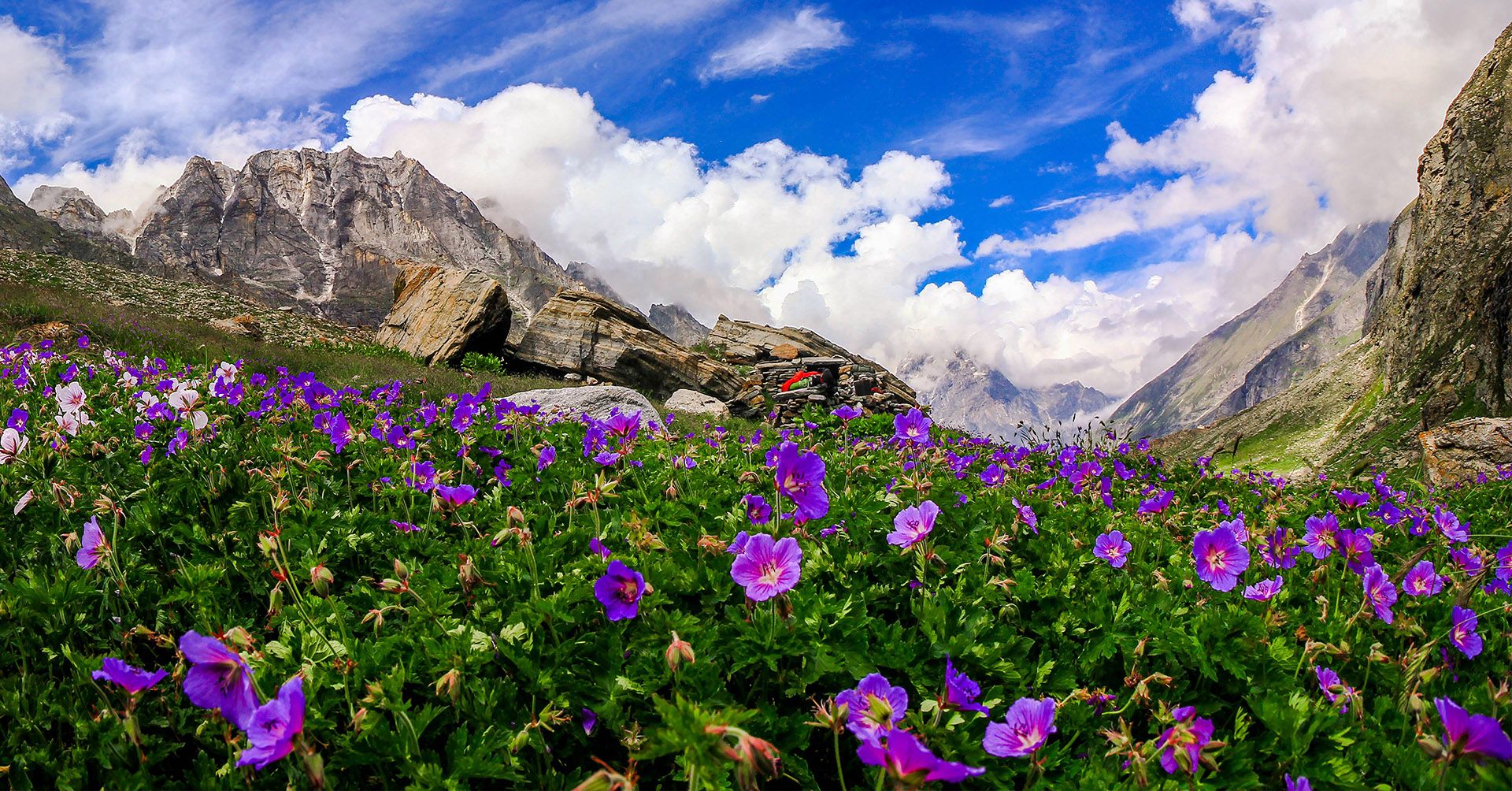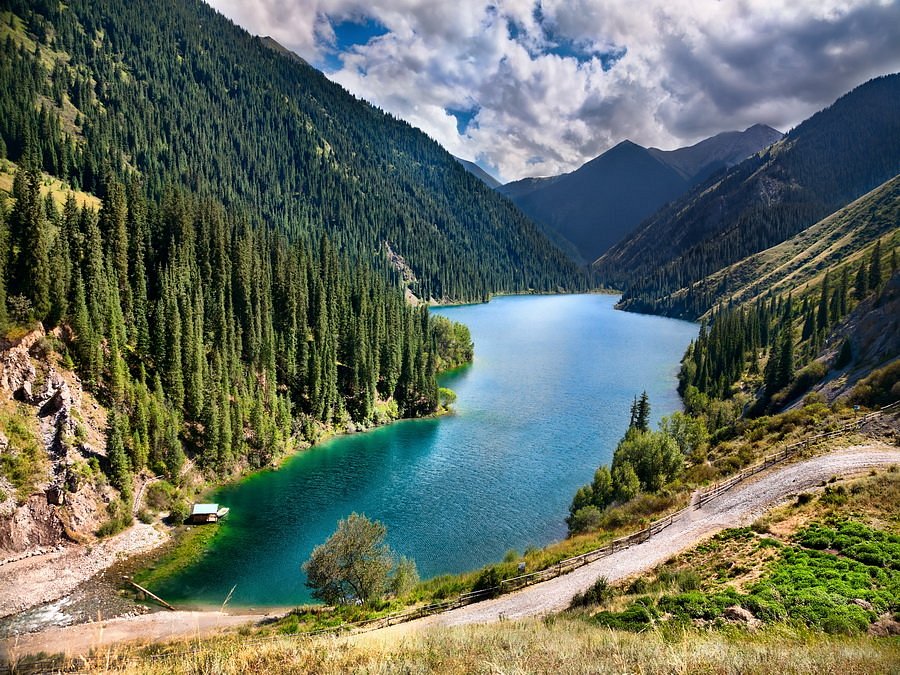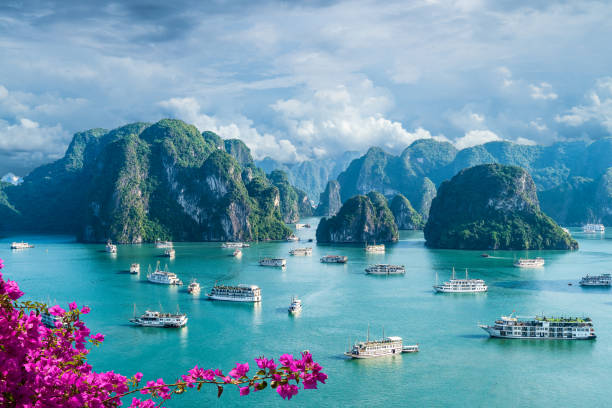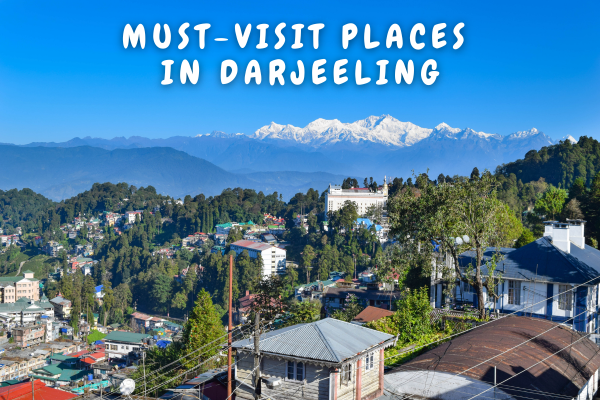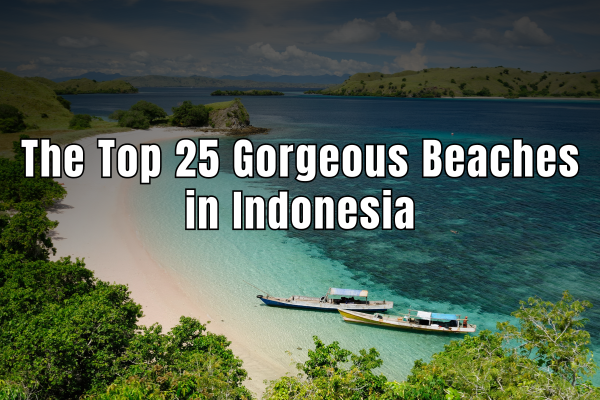

The Hornbill Festival
Welcome to the world of Nagaland, where the vibrant and colorful Hornbill Festival celebrates the rich heritage of the Naga people. This annual extravaganza is a spectacular amalgamation of traditions that beautifully showcases the unity among Nagaland’s diverse tribes. From dynamic performances to tantalizing cuisine, this cultural fiesta offers a delightful immersion into the history of the Hornbill Festival.
The Hornbill Festival is a cultural festival celebrated every year in December in the state of Nagaland, India.
The festival is celebrated from December 1st to December 10th every year. The festival is held at the Naga Heritage Village in Kisama, which is located around 12 km from the capital of Nagaland, Kohima.
The events usually start at 9:30 am every day and the festival timings are from 9:00 am to 5:00 pm. For Indians, the daily admission cost to the Hornbill Festival 2023 is INR 20–30, while overseas visitors must pay INR 100. Each day, a ticket must be purchased in order to enter the event.
Some key points to note about the Hornbill Festival 2023 are:
- Date: The festival will be held between December 1 and 10, 2023.
- Time: The festival timings are from 9:00 a.m. to 5:00 p.m.
- Location: The festival will be held at the Naga Heritage Village in Kisama, which is located around 12 km from the capital of Nagaland, Kohima.
- Tickets: The Hornbill Festival in 2023 will cost Indians between INR 20 and INR 30 each day of admittance, while foreign guests would need to pay INR 100. To enter the event, a ticket must be purchased each day.
The Hornbill Festival is a great opportunity to experience the vibrant traditions, cultural showcases, and thrilling adventures of Nagaland’s rich heritage. Visitors can immerse themselves in the unique and colorful Naga tribal dances, food, music, and folklore – all in one place
The History of Hornbill Festival
The History of Hornbill Festival is a fascinating journey that takes us back through the corridors of time, revealing the roots and evolution of this grand celebration. Originating from ancient traditions and stories, the festival has undergone a remarkable transformation over the years, evolving into the magnificent event we witness today.
Through the tales of the past, the festival’s history unravels the cultural heritage of the Naga people. It’s a testament to their resilience, traditions, and the deep sense of unity among the various tribes. The Hornbill Festival has grown to become a symbol of pride, reflecting the diverse cultural fabric of Nagaland and presenting a joyous showcase of their music, dance, and culinary arts.
Join us as we explore the captivating history of the Hornbill Festival, a journey that not only delves into the past but also celebrates the living traditions and vibrant heritage of the Naga community. Strap in for a virtual expedition through time as we uncover the fascinating evolution of this remarkable festival!
The Origins of the Festival


The Hornbill Festival, one of Nagaland’s most famous festivals, is a big deal for the Naga tribes. But, have you ever wondered where this cool celebration came from? Let’s dive into its awesome history!
The History of Hornbill Festival goes way back to a time when different Naga tribes were doing their thing in their own villages. Each tribe had its own unique customs, traditions, and rituals that were super important to their way of life.
In the year 2000, the Government of Nagaland came up with the fantastic idea of starting the Hornbill Festival to showcase the amazing cultural heritage of these tribes. They wanted to bring everyone together and give them a chance to show off their cool customs and traditions.
Since then, this festival has become more and more popular every year. It’s not just a big deal for the locals; people from all over India and even from other countries come to see this mega event.
It’s one of the most happening festivals in Northeast India! The roots of this festival are tied deeply into Naga culture – a story of how these tribes have stayed strong through centuries!
As you learn more about this awesome festival, you’ll find out that each tribe has its own unique reasons for being a part of this massive celebration. From showing off their traditional clothes and dances to displaying their yummy local foods and crafts, everything they do reflects their super cool heritage!
Picture this: you’ll see talented artists in vibrant traditional outfits putting on incredible dance performances and hear the beats of folk music that has been passed down through generations! There are also traditional games like wrestling that add an extra thrill, and art displays with amazing handmade stuff crafted by skilled artisans.
Each year, they keep adding more exciting stuff to make the festival even more awesome! There are music gigs with bands from all over India that bring everyone together, no matter where they’re from or what language they speak!
Oh, and have you heard about the Hornbill International Rock Contest? It’s a big deal for music lovers who come from all over just for this!
This festival isn’t just a visual delight that celebrates different cultures; it’s also made a huge impact on tourism and the way people see Nagaland. It’s brought more attention to this amazing place and its rich traditions, making it even more awesome for visitors!
Naga Tribe of Nagaland


The Naga tribes are a conglomeration of numerous indigenous communities residing in the northeastern region of India, primarily in the state of Nagaland. The Naga people are composed of several tribes, with the exact number of tribes often estimated to be around 16 major tribes and many sub-tribes, each with its own distinct traditions, languages, and customs.
Traditionally, the Naga tribes were organized into village-based societies, with each tribe having its own territory and governance structure. Some of the major Naga tribes include the Angamis, Aos, Lothas, Sumis, and Rengmas, among others. Each tribe maintains its unique cultural practices, dialects, and social structures.
The history of the Naga tribes is marked by a legacy of independence and warrior traditions. In the past, inter-tribal conflicts and headhunting were significant aspects of their history. However, in the early 20th century, these practices ceased due to various social, cultural, and historical influences.
The traditional social structure of the Naga tribes was based on village councils, often led by elders or chiefs, who made decisions affecting the community. Their culture was deeply rooted in agrarian practices, hunting, and weaving. Music, dances, and oral traditions were central to their cultural heritage, often depicting stories of bravery, fertility, and rituals.
Christianity has significantly influenced the Naga tribes, with many adopting the religion brought by missionaries during the 19th and 20th centuries. It has become a prominent aspect of Naga society and has influenced their way of life and cultural practices.
Nagaland, located in the northeastern part of India, is the primary homeland of the Naga tribes. The state shares its borders with Assam to the west, Arunachal Pradesh to the north, Manipur to the south, and Myanmar to the east.
The Naga people continue to celebrate their traditions through various festivals, the most notable being the Hornbill Festival, which serves as a vibrant platform to showcase their cultural diversity, with colorful dances, music, arts, crafts, and traditional attires, reflecting the stories and legacy of their heritage.
Throughout history, the Naga tribes have shown resilience in preserving their cultural identity, while adapting to modern influences and changes in society. Their rich heritage and traditions continue to play a crucial role in shaping the unique identity and cultural fabric of the region.
Also Read: Why is Dussehra Celebrated?
The Significance of the Hornbill Bird in Naga Culture


The Hornbill bird is like a superstar in the culture of the Naga people! It’s famous for its bright feathers and majestic look, and it’s super important in their traditions.
According to Naga stories, if you see a hornbill flying over your house or village, it’s like a good luck charm from the gods. They believe that the feathers of the hornbill bring blessings and protect people during special ceremonies and rituals.
But wait, it’s not just about luck and blessings! These birds are nature’s little helpers too. They spread seeds around, helping forests grow by planting seeds far and wide. That’s a big deal for keeping Nagaland’s forests diverse and healthy.
Because these birds are so important for both culture and nature, there are plans to save them. Like the Hornbill Nest Adoption Program, which works to protect their homes while getting local communities involved in taking care of these amazing birds.
At the annual Hornbill Festival in Kohima, different tribes show off their traditions. You’ll see performances that tell stories of hunting with cool models of hornbills. It’s a reminder of how humans and nature have always been close buddies from way back in time.
While we party at this festival each year, it’s important to remember that taking care of our natural heritage is just as important as preserving our cool traditions. The hornbill bird is like a symbol of this awesome link between nature and culture in Nagaland’s colorful world.
Evolution of the Festival over the Years


The Hornbill Festival has grown into this mega celebration of Naga culture over time. What used to be a small thing to promote Nagaland to tourists is now one of the biggest cultural fiestas in all of India.
At the start, the festival was all about showing off the cool traditions and rituals of the Naga people. Different local tribes would get together and show their awesome dances, songs, and games. People who came to see it were amazed by this burst of cultural pride.
But as the years went by, the festival got even cooler! They added competitions like wrestling, archery, and stone-pulling, which not only showed how strong people were but also how well different tribes got along.
And that’s not all – they kept making the festival better every year. There were art shows with amazing local crafts and yummy food stalls selling delicious Naga dishes made from local ingredients.
For music lovers, there are live performances by famous artists from all over India. It’s like a mix of old and new, celebrating Nagaland’s awesome music.
And hey, the people behind the festival care about nature too! They’re trying to make the festival more eco-friendly by managing waste better and promoting tourism that looks after the environment.
More and more tourists come to Nagaland every December just to see this amazing celebration of Naga culture. The Hornbill Festival keeps drawing people from everywhere who want to see how tradition meets modern life in this awesome place.
Looking ahead, it’s pretty cool to think about what new stuff they’ll add in the next festivals. But one thing’s for sure – the Hornbill Festival will keep getting better and better, showing off the vibrant culture and traditions of Nagaland!
Cultural Activities and Performances at the Festival


The Hornbill Festival isn’t just about celebrating Nagaland’s amazing cultural heritage – it’s a chance for visitors to dive right into the unique traditions of the Naga people. During the festival, there are all sorts of cool activities and performances that give you a taste of the customs that have been around for generations.
One of the best parts of the festival is the traditional dances put on by different Naga tribes. These dances are like a magical blend of grace, rhythm, and storytelling. The dancers wear these super colorful outfits covered in intricate beadwork and feathers, making them even more captivating.
Music is a big deal at the festival too. They use traditional instruments like drums, bamboo mouth organs called “kongs,” and shawms to create an awesome symphony that fills the air with energy and excitement.
You can also see traditional games, like archery competitions and wrestling matches. These aren’t just entertaining; they give you a glimpse into sports that have been a part of Naga culture for ages.
Artisans proudly show off their skills at stalls all around the festival. You’ll see beautiful woven textiles, handmade jewelry, and amazing wood carvings that reflect both Naga artistry and their identity.
And let’s not forget about the food! Local delicacies like smoked pork dishes and akhuni (fermented soybean) curry will seriously tantalize your taste buds and introduce you to Naga cuisine.
The Cultural Activities Center is like a treasure trove of workshops that let you dive deep into Nagaland’s culture. You can learn how to cook traditional dishes or watch demonstrations of weaving, so you get hands-on experience with this fascinating world.
All in all, the cultural activities and performances at the Hornbill Festival offer a totally immersive experience. Whether you’re into dance, music, traditional games, or crafts, there’s something awesome for everyone to enjoy!
Also Read: 10 Best Places to Visit in Dussehra: Where and How to Celebrate
Impact on Tourism and Local Economy


The Hornbill Festival is not only a celebration of culture and traditions but also an opportunity for the local economy to thrive. With thousands of visitors flocking to Nagaland each year, the festival has had a significant impact on tourism in the region.
Hotels, guesthouses, and homestays are booked months in advance as tourists from all over the world come to witness the vibrant festivities. This surge in tourist arrivals provides a boost to the local hospitality industry, creating job opportunities for locals and generating income for businesses.
Local artisans and craftsmen also benefit greatly from the festival. The marketplaces are filled with stalls showcasing traditional Naga handicrafts, textiles, and artworks. Visitors have the chance to purchase these unique items directly from the artisans themselves, providing them with direct income while promoting sustainable livelihoods.
Restaurants and food vendors also experience increased business during this time. Traditional Naga cuisine takes center stage at various food stalls throughout the festival grounds, allowing visitors to savor authentic flavors and support local eateries.
Furthermore, transportation services such as taxis and tour operators see heightened demand during this period as tourists explore Nagaland’s natural beauty beyond just attending festival events. From guided tours of tribal villages to trekking adventures in scenic landscapes like Dzukou Valley or Japfu Peak – there is no shortage of experiences that showcase Nagaland’s rich cultural heritage.
In addition to its positive impact on tourism, the Hornbill Festival contributes significantly to boosting Nagaland’s overall economy by attracting investments in infrastructure development aimed at improving accessibility and enhancing visitor experiences.
Through its role as a catalyst for economic growth, both within urban centers like Kohima where it takes place annually or in rural areas hosting satellite events; this festival showcases how cultural celebrations can contribute positively towards regional development while preserving traditional practices passed down through generations
Future of the Hornbill Festival


The future of the Hornbill Festival looks promising as it continues to attract visitors from around the world. With each passing year, the festival has grown in popularity and has become a major cultural event in Nagaland. People are drawn to its vibrant celebrations, showcasing the rich traditions and customs of the Naga tribes.
As tourism in Northeast India expands, so does the potential for the Hornbill Festival to contribute to the local economy. The festival provides opportunities for local artisans, craftsmen, and entrepreneurs to showcase their products and generate income. It also boosts other sectors such as hospitality, transportation, and food services.
In recent years, there have been efforts to make the festival more sustainable by promoting eco-friendly practices. This includes reducing plastic waste, encouraging responsible tourism practices, and supporting local initiatives that protect natural resources.
Moreover, with advancements in technology and connectivity, there is an increased opportunity for global exposure to this unique cultural extravaganza. Social media platforms allow people from all corners of the globe to catch a glimpse of what makes this festival so special.
However, it is important for organizers and stakeholders to strike a balance between preserving traditional aspects of the festival and embracing modernization. As Nagaland undergoes rapid development, the challenge lies in maintaining authenticity without diluting its essence.
To ensure the sustainability and continued growth of this iconic event, it is crucial for both government agencies and private entities involved in organizing the Hornbill Festival to work collaboratively.
They must invest in infrastructure development, support artistic endeavors, and foster innovation that can enhance visitor experiences while respecting the cultural integrity of the Naga tribes.
Overall, the future holds great promise for the Hornbill Festival.
As tourism continues to grow and awareness increases, this annual celebration will undeniably playacritical roleinpreservingNagaland’s rich cultural heritage.
List of All Nagaland Festival


Hornbill Festival:
This festival is celebrated every year for 10 days at the start of December. It takes place at Kisama Heritage Village, around 12 km from Kohima. The festival is attended by all the major tribes of Nagaland, showcasing the cultural diversity of the Naga people. The festival includes regional delicacies, ethnic dance performances, sales of tribal artworks, games, and religious ceremonies
Sekrenyi:
This festival of purification is celebrated by the Angami tribe in the month of February and falls on the 25th day of the Angami month of Kezei. Celebrated at Kohima Village, Khonoma, and Tuophema, it is a ten-day holiday of feasting and singing that purifies and sanctifies (originally before going to war).
Aoleang:
The Konyaks of northern Nagaland celebrate this as their principal holiday. Every year in the Konyak area, it is commemorated during the first week of April. Aoleang is celebrated in every hamlet, but particularly in Mon, the Konyak capital. There is great fanfare and spectacle at Aoleang. Every day of the celebration has a special meaning, as well as traditions and celebrations. This event features native dances, songs, and games to highlight the Konyak people’s rich cultural legacy.
Tokhu Emong Festival:
Celebrated in November by the Lotha tribe, Tokhu Emong is a post-harvest festival that involves various rituals, feasting, and cultural performances, signifying thanksgiving and expressing gratitude for a successful harvest.
Naknyulem Festival:
Celebrated in July by the Chang tribe, Naknyulem involves cultural ceremonies, traditional dances, and communal activities that highlight the community’s unity and cultural heritage.
Moatsü Festival:
Observed in May by the Ao tribe, Moatsü is an important agricultural festival. It involves various rituals, dances, and feasting, marking the completion of sowing seeds and seeking blessings for a fruitful harvest.
Mungmung Festival:
Celebrated in September by the Sangtam tribe, Mungmung is a significant occasion involving cultural activities, traditional rituals, and communal feasting, symbolizing the community’s unity and cultural pride.
Monyü Festival:
Observed in April by the Phom tribe, Monyü is a cultural festival encompassing traditional ceremonies, folk dances, and rituals, celebrating the cultural heritage and traditions of the Phom people.
Ngada Festival:
Celebrated in November by the Rengma tribe, Ngada is a harvest festival featuring rituals, traditional dances, and feasting, marking the culmination of the agricultural season and expressing gratitude for a bountiful harvest.
Luira Phanit Festival:
Celebrated in February/March by the Tangkhul tribe, Luira Phanit is a seed-sowing festival involving rituals, cultural activities, and prayers for a prosperous farming season.
Metümnyo Festival:
Celebrated in August by the Yimchunger tribe, Metümnyo is a festival featuring various cultural ceremonies, dances, and communal activities, symbolizing unity and traditional practices.
Chavan Kumhrin Festival:
Observed in October by the Anāl tribe, Chavan Kumhrin involves traditional customs, cultural performances, and communal festivities, reflecting the community’s cultural heritage.
Chiithuni Festival:
Celebrated in January by the Mao tribe, Chiithuni is a festival characterized by cultural rituals, traditional songs, and dances that showcase the Mao tribe’s cultural identity.
Luokuo Festival:
Observed in February by the Pochury tribe, Luokuo involves cultural ceremonies, rituals, and traditional activities, marking the onset of the sowing season and expressing gratitude to the deities for a successful harvest.
Yemshe Festival:
Celebrated in October by the Pochury tribe, Yemshe is a post-harvest festival involving cultural activities, rituals, and feasting, signifying thanksgiving for a fruitful harvest and celebrating the community’s unity.
Chaga Gadi/Langsimnyi Festival:
Celebrated in October by the Zeliang tribe, Chaga Gadi/Langsimnyi involves traditional ceremonies, cultural performances, and community gatherings, celebrating the community’s cultural identity and heritage.
Chavang Kut Festival:
Celebrated in November by the Kuki tribe, Chavang Kut is a harvest festival involving cultural events, dances, and communal feasting, signifying thanksgiving for a successful harvest season.
Wangala Festival:
Celebrated in November by the Garo tribe, Wangala is a significant harvest festival involving traditional dances, rituals, and feasting, celebrating the spirit of togetherness and expressing gratitude for a bountiful harvest.
Post-harvest festival of the Lotha Tribe:
Celebrated in November by the Ahuna tribe, this festival involves cultural rituals, traditional ceremonies, and communal feasting, marking the successful post-harvest season.
Post-harvest festival of the Sumi Tribe:
Observed in November by the Sumi tribe, this festival involves cultural activities, feasting, and traditional rituals, signifying thanksgiving for a productive post-harvest season.
Apikimti Festival:
Celebrated in November by the Sumi tribe, Apikimti is a significant cultural festival involving various traditional performances, feasting, and rituals that symbolize unity and cultural heritage.
Terhüni Festival:
Observed in December by the Angami tribe, Terhüni is a festival involving cultural ceremonies, traditional practices, and community events, symbolizing unity and thanksgiving for a prosperous season.
Hornbill Festival:
This is a festival organized by the Nagaland State Government to promote inter-group interaction. It is held every year from December 1 to December 10 and is attended by all the major tribes of Nagaland.
Conclusion: Preserving Nagaland’s Rich Cultural Heritage through the Hornbill Festival
The Hornbill Festival stands as a testament to the rich cultural heritage of the Naga people and their deep connection with nature. This annual celebration has not only provided a platform for showcasing diverse traditions, but it has also played a crucial role in preserving and promoting these customs for future generations.
Over the years, the festival has evolved into a grand spectacle that attracts visitors from all over the world. It has become an integral part of Nagaland’s identity and acts as a beacon for cultural exchange and understanding.
Through various cultural activities, performances, exhibitions, and competitions held during the festival, both locals and tourists alike get an opportunity to immerse themselves in Naga culture. From traditional dances like warrior dances to folk songs sung around bonfires, every aspect of Naga life is brought to life at this vibrant event.
Beyond its cultural significance, the Hornbill Festival has also had a profound impact on tourism and the local economy. As more people flock to witness this unique celebration each year, there is an increased demand for accommodation providers, transportation services, restaurants serving local cuisine, and handicrafts vendors selling traditional artifacts – all contributing to economic growth in Nagaland.
Moreover, by actively participating in or attending such festivals as the Hornbill Festival – tourists contribute directly towards supporting local communities who rely on income generated from tourism-related activities. This support helps sustain their way of life while empowering them economically.
Looking ahead into the future of this remarkable festival provides hope that it will continue to grow while staying true to its roots. The organizers must strive towards maintaining authenticity without compromising on innovation so that newer generations can appreciate and connect with their heritage even further.

